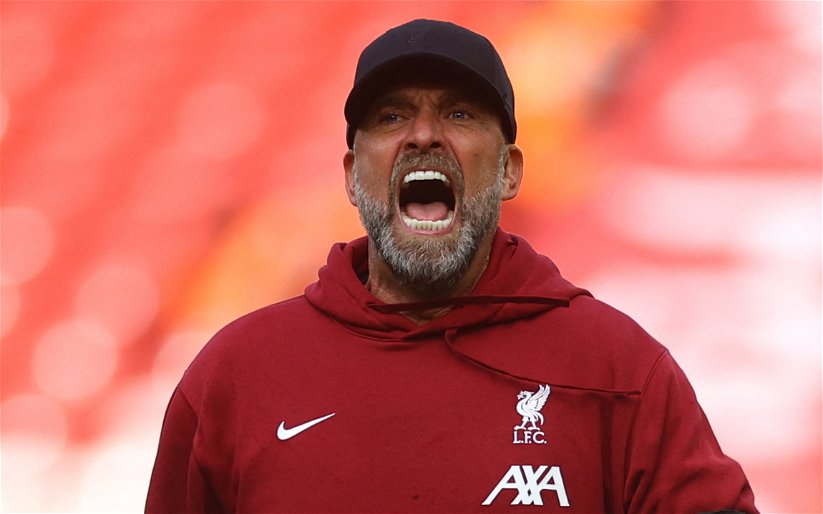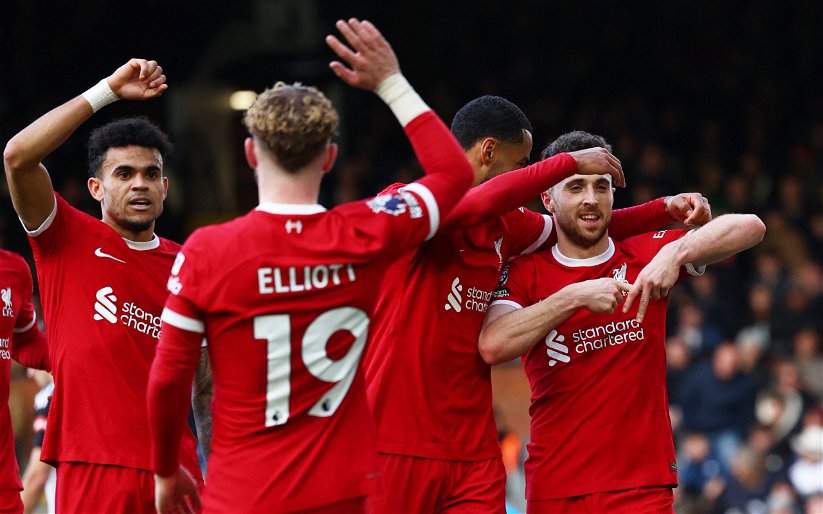As Liverpool manager Jurgen Klopp prepares his new side for a first full campaign under his stewardship, he will be aware more than anyone else about the demands of his style of football.
The strain of ‘gegenpressing’ is akin to any form of high intensity tactics; subsequently teams that deploy such methods are often tired at the business end of the season.
Diego Simeone’s Atletico Madrid are another side that expel vast amounts of energy when they are out on the pitch, even if their style is more defensive than Klopp’s.
Harassing high-quality opposition is arduous, as they are often difficult to dislodge off the ball, then once you have the ball, you need to have the energy to do something with it, otherwise hunting the ball down becomes futile.
Consequently, being able to rotate your team is essential so the players together can cope and succeed with such gruelling, but often rewarding (especially in recent times), methods. Even Rafael Benitez rotated constantly when he was in charge at Anfield, so his best players could avoid fatigue throughout the season and play at their maximum in cup finals and at the closing stages of league campaigns.
After arriving at the club in October, Klopp rotated often, especially in the league when the Reds were prioritising their Europa League title assault.
However, the German did not have the depth of quality in his squad to maintain form across multiple competitions, hence the early FA Cup exit and finishing only eighth in the Premier League.
Moreover, tiredness still crept into the strongest Liverpool outfit as the Reds went into May, struggling especially against Chelsea and then Sevilla in the Europa League final.
Klopp will be looking forward to spending a whole summer with the Liverpool players, enjoying a proper pre-season, even if the summer international tournaments provide a few obstacles to overcome. Being able to train with his Liverpool squad with no competitive fixtures to focus on, July and early August will be a key period for Klopp, as the German will look to ensure the fitness and stamina of the squad is sufficient to last through the entire season. Otherwise, Klopp will have to abandon his footballing principles to remain at Liverpool if the team suffers burnout before the end of next season.
To ensure this does not happen and Liverpool keep up with Klopp’s energy-sapping methods, the size of the squad has to remain high, despite the fact that Liverpool will not be travelling around the European continent next season, having failed to qualify for the Champions League or Europa League.
Klopp will have to rotate, even if most of next season will consist of only weekly fixtures, instead of the constant manic midweek matches that the Reds had to deal with in 2015/16.
Yet in order to rotate the Liverpool manager needs to have players standing by who can compensate in the short-term for those first-choice figures in terms of quality, with injuries another factor to consider.
Additionally, these squad players will need to be content enough to accept their lower status for next season, so that when they do get minutes of action on the pitch, they are confident and play to the best of their ability.
For Klopp, he has to plan beyond this season, and for a future where Liverpool are in European competition, fighting on multiple fronts. Therefore, there is little incentive in stripping down the squad for the reduced schedule when the aim is to cope with a much heavier workload in future years.
Brendan Rodgers chopped and changed his squad ahead of the 2013/14 campaign, when Liverpool nearly won their first Premier League title in around a quarter of a century and had no Europe to worry about. However, when building up the squad for the Champions League, Liverpool’s transfer recruitment came up desperately short, even if some players are beginning to turn their fortunes around.
Regarding Klopp, he should make the changes he wants now, and not worry about waiting for European involvement once again, especially when signing young players, as they will take time to settle anyway. Consequently, those youngsters who experience little first-team action this season should not be disheartened, as it provides them with time to progress into Liverpool players of first-team quality.
Yet there are those currently at the club who may struggle for first-team action next season, providing completion but missing out on the important matches.
They can either come to terms with this, or instead seek pastures new.
Joe Allen is one such player who will be weighing up his long-term commitment to Liverpool as he approaches his fifth season with the club. Since joining in 2012 from Swansea City, he has struggled to uphold any sort of consistent first-team spot, even when under Rodgers, who brought Allen from South Wales having left Swansea himself to manage Liverpool.
This season, Allen has improved his form (and his look!), especially since the start of 2016, but he can be overwhelmed in a two man midfield, as shown in Southampton’s 3-2 comeback win over the Reds in March, and Klopp only seems to trust him as an impact substitute.
Looking ahead to next season, the only change that seems probable for Allen at Liverpool is that he does not even make the bench, with the likes of Emre Can, James Milner, Jordan Henderson, new signing Marko Grujic and a potential arrival all competing for two midfield spots, assuming Klopp continues with a 4-2-3-1 formation.
Therefore it is unsurprising to see the rumours surrounding Allen’s future at the club, with returns respectively to Swansea and Rodgers at Celtic heavily mentioned.
Lucas Leiva’s new-found versatility may ensure his survival at Liverpool for yet another season, as for years the Brazilian has been constantly linked with moves away from Anfield, but is currently the Reds’ longest-serving player.
Now able to play in the centre of defence, and effectively, Lucas would provide good depth both here and in his previous position of defensive midfield, but even being able to cover multiple positions is unlikely to increase his game-time next season.
Simon Mignolet’s position as the number one goalkeeper is under threat with the arrival of Mainz goalkeeper Loris Karius, while Alberto Moreno’s performance against Sevilla in Basel looks to have sealed his fate, but the Spaniard could remain as a back-up left-back.
Danny Ings and Divock Origi may have to bide their time to start upfront in league fixtures if Daniel Sturridge remains fit, while Adam Lallana and Milner may be providing competition for the attacking midfield positions, and again may have to wait a while for their chance.
Conversely, their improved form under Klopp has probably ensured their future at the club for another season, while, as with Lucas, Milner can also compete in central midfield.
Younger players at the club, such as Sheyi Ojo and new arrivals including Grujic, will need to go out on loan if they want regular football, and whilst that may be beneficial for Ojo, Grujic would be better off settling in at the club and training with the first-team, gaining experience of life at Liverpool.
In contrast, Ojo is higher up the ladder than Grujic, and a loan spell at a Premier League club would indicate whether he can succeed at the highest level.
Finally, even captain Henderson will feel the pressure in maintaining a place in Klopp’s strongest eleven for the 2016/17 campaign.
Henderson suffered terrible luck with injuries after inheriting the armband off Steven Gerrard, but is a top-class midfielder with the capability to deliver many goals and assists, and his energy and athleticism means he fits into Klopp’s style of play.
The question surrounding Henderson is whether he can return to top form again, and quickly, otherwise his standing at the club will be at risk as Klopp seeks high-quality alternatives.
Furthermore, Henderson may suit Klopp’s ‘gegenpressing’ style, but there are doubts surrounding his position in this Liverpool side, as he is not a defensive midfielder and would probably be suited better in a central attacking role; however there are many ahead of him in that queue, including Philippe Coutinho and Roberto Firmino.
Henderson flourished under Rodgers in his 4-3-3 and 4-4-2 diamond formations – whether he can succeed in a more licensed role alongside Can is up for debate, running parallel alongside the questions over his Liverpool future.
If he is allowed to perform as a box-to-box midfielder, then the captain may yet retain his place.
The Premier League has to be Klopp’s main focus next season over cup competitions, building consistency and defensive solidity, as those are the keys for a successful side in the long-term.
Building a base and spine to a team has always been the way forward, even if Rodgers came close with his all-out attacking firepower headed by Luis Suarez and Sturridge.
Benitez and Gerard Houllier started from the back and built forward. Consequently, they won trophies and kept Liverpool near the upper echelons of the league.
Klopp has to approach next season in a similar mindset, only maintaining his own high-intensity principles – which means a larger squad.



